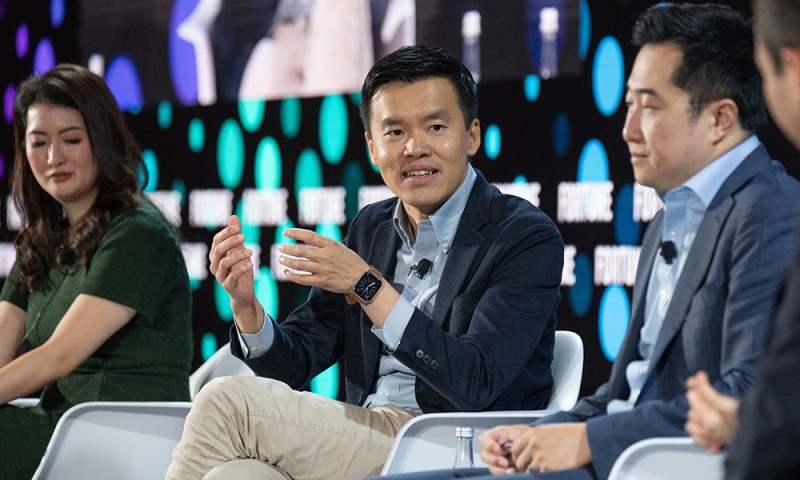
深度求索(DeepSeek)推出引发热议的AI模型后,开发者们盛赞其高性能与低算力成本优势,更对该中国研究团队以开源形式发布模型的决定推崇备至。此举允许任何人下载该模型并根据需求进行二次开发。
整个2025年,中国大大小小的AI开发团队陆续发布了一系列开源模型。这些模型不仅让海外开发者印象深刻,也显示出中国在这场新技术竞赛中正在快速追赶。
如今,开源模型,尤其是来自中国的模型,或已开始赶超OpenAI等美国公司推出的闭源模型。甚至一些美国公司也在把目光投向中国模型:上个月,爱彼迎(Airbnb)首席执行官布赖恩·切斯基表示,公司已经开始采用阿里巴巴(Alibaba)的开源大模型“通义千问”(Qwen),并称该模型性能良好,响应迅速且成本低廉。
在本周一于马来西亚吉隆坡举行的《财富》创新论坛上,祥峰投资(Vertex Ventures)东南亚与印度区执行董事陈业鹏表示:“中国更注重技术‘扩散’,而美国更追求‘完美’。”中国的AI模型通常成本更低,更轻量化,因此更容易进入大众市场。
他表示:“如果在淘宝(Taobao)搜索儿童玩具,你会发现很多产品已经嵌入了DeepSeek。这足以说明中国在AI应用层面已走在前列。”
不过,尽管开源AI模型能推动创新和技术普及,但也伴随着风险。
银湖寰宇集团(Silverlake)首席执行官吴晓灵警告称,开源模型缺乏闭源模型所配套的客户支持。她表示:“企业用户使用AI,追求的不仅仅是模型性能。一旦格式配置出现问题导致系统宕机,开源环境是否能提供足够的支持?”
尽管如此,多数与会嘉宾仍看好开源AI模型。
Dyna.AI总经理兼投资者关系负责人辛西娅·西安塔尔指出,在金融等受到高度监管的行业,开源模型甚至可以成为一项资产。她解释称:“模型必须具备可审计性,不能成为‘黑箱’,而这正是开源模型的优势所在。”
陈业鹏进一步指出,企业使用开源模型,还能避免过度依赖开发模型的科技公司。
他警告称:“闭源模型的问题在于,科技公司可以随时修改模型,甚至提高使用成本,而用户毫无反制能力。他们甚至可以改变模型的性能特征。”
不过,陈业鹏也强调,开源与闭源并非只能二选一。在实验验证阶段,闭源模型或许更合适,因为用户能更快评估自己的AI投资回报。
他建议企业在准备规模化应用时,则可以切换到开源模型,以降低成本。(*)
译者:刘进龙
审校:汪皓
深度求索(DeepSeek)推出引发热议的AI模型后,开发者们盛赞其高性能与低算力成本优势,更对该中国研究团队以开源形式发布模型的决定推崇备至。此举允许任何人下载该模型并根据需求进行二次开发。
整个2025年,中国大大小小的AI开发团队陆续发布了一系列开源模型。这些模型不仅让海外开发者印象深刻,也显示出中国在这场新技术竞赛中正在快速追赶。
如今,开源模型,尤其是来自中国的模型,或已开始赶超OpenAI等美国公司推出的闭源模型。甚至一些美国公司也在把目光投向中国模型:上个月,爱彼迎(Airbnb)首席执行官布赖恩·切斯基表示,公司已经开始采用阿里巴巴(Alibaba)的开源大模型“通义千问”(Qwen),并称该模型性能良好,响应迅速且成本低廉。
在本周一于马来西亚吉隆坡举行的《财富》创新论坛上,祥峰投资(Vertex Ventures)东南亚与印度区执行董事陈业鹏表示:“中国更注重技术‘扩散’,而美国更追求‘完美’。”中国的AI模型通常成本更低,更轻量化,因此更容易进入大众市场。
他表示:“如果在淘宝(Taobao)搜索儿童玩具,你会发现很多产品已经嵌入了DeepSeek。这足以说明中国在AI应用层面已走在前列。”
不过,尽管开源AI模型能推动创新和技术普及,但也伴随着风险。
银湖寰宇集团(Silverlake)首席执行官吴晓灵警告称,开源模型缺乏闭源模型所配套的客户支持。她表示:“企业用户使用AI,追求的不仅仅是模型性能。一旦格式配置出现问题导致系统宕机,开源环境是否能提供足够的支持?”
尽管如此,多数与会嘉宾仍看好开源AI模型。
Dyna.AI总经理兼投资者关系负责人辛西娅·西安塔尔指出,在金融等受到高度监管的行业,开源模型甚至可以成为一项资产。她解释称:“模型必须具备可审计性,不能成为‘黑箱’,而这正是开源模型的优势所在。”
陈业鹏进一步指出,企业使用开源模型,还能避免过度依赖开发模型的科技公司。
他警告称:“闭源模型的问题在于,科技公司可以随时修改模型,甚至提高使用成本,而用户毫无反制能力。他们甚至可以改变模型的性能特征。”
不过,陈业鹏也强调,开源与闭源并非只能二选一。在实验验证阶段,闭源模型或许更合适,因为用户能更快评估自己的AI投资回报。
他建议企业在准备规模化应用时,则可以切换到开源模型,以降低成本。(*)
译者:刘进龙
审校:汪皓
When DeepSeek released its buzzy AI model, developers celebrated its high-performance and low compute costs—and the Chinese research lab’s decision to release the model on an open-source basis, allowing anyone to download and tweak it for their own ends.
Chinese AI developers, large and small, have released a series of open-source AI models throughout 2025, impressing outside developers and showing that China is able to catch up in the race to develop this new technology.
Open-source models, particularly from China, now may be starting to edge out the proprietary models rolled out by U.S. firms like OpenAI. Even some U.S. businesses are starting to think about Chinese models: Last month, Airbnb CEO Brian Chesky said that his company had started to use Alibaba’s open-source Qwen model, which he said was good, fast and cheap.
“China is focused a bit more on diffusion, while the U.S. focuses more on perfection,” Chan Yip Pang, executive director at Vertex Ventures SEA and India, said at the Fortune Innovation Forum in Kuala Lumpur, Malaysia on Monday. Chinese AI models tend to be cheaper and more lightweight, enabling them to spread into the mass market.
“If you look at Taobao—the Chinese equivalent of Amazon—and search for kids toys, you’ll find quite a number embedded with DeepSeek. That tells you how far ahead they are in terms of [AI] adoption,” Pang said.
But while open-source AI can drive innovation and democratize access to powerful new technologies, it comes with risk.
Cassandra Goh, CEO of Silverlake, warned that open-source models don’t come with the customer support offered by developers wtih proprietary models. “If you’re an enterprise user of AI, it’s not just about having the best performance,” she said. “If there’s an issue with your formatting and it goes down, is there enough support in an open-source environment?”
Still, most panelists believed that open-source AI was ultimately a better option.
Open-source models can be an asset in highly-regulated industries like finance, said Cynthia Siantar, the general manager and head of investment relations at Dyna.AI. “The model has to be auditable. It can’t be a black box,” she said. “I think that’s where open-source models shine.”
Using open-source AI models also prevents companies from being too reliant on the tech companies which develop them, Pang argued.
“The problem with using proprietary models is that [tech companies] could change them. They can raise costs on you, and you have no pushback on that. They can even change model performance characteristics,” he warned.
Yet Pang said the choice between open-source and proprietary models wasn’t mutually exclusive. Closed-source models might be better in the experimentation phase, as users quickly understand the returns on their AI investments.
Then, once companies are ready to scale up their AI operations, they can switch to open-source models to reduce costs, Pang suggested.

